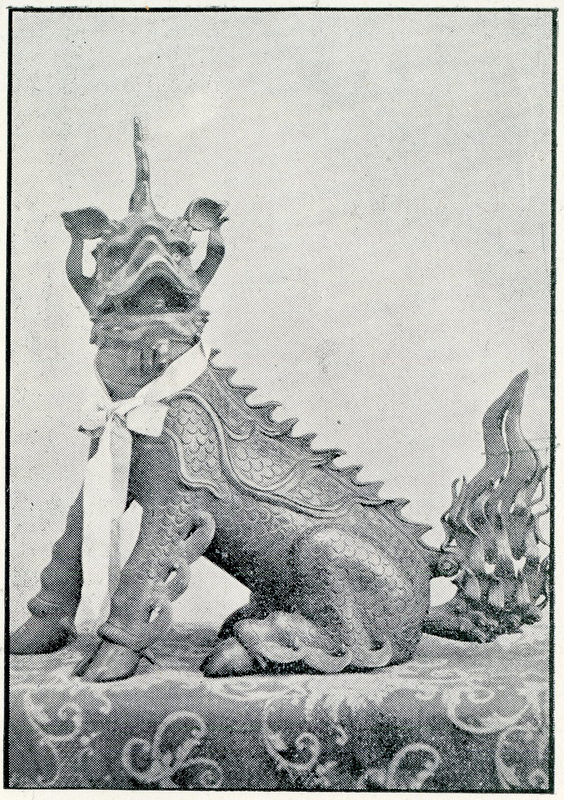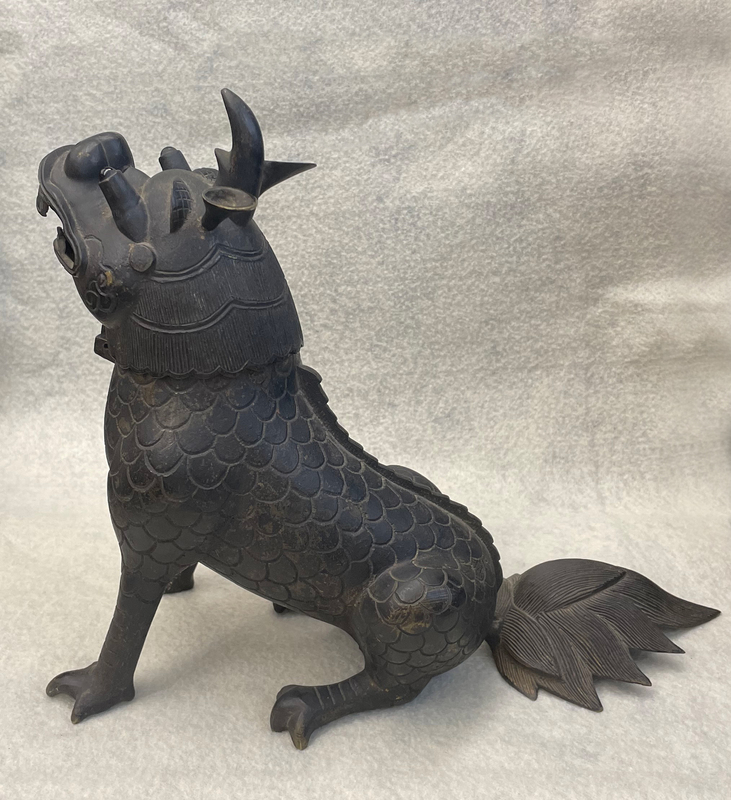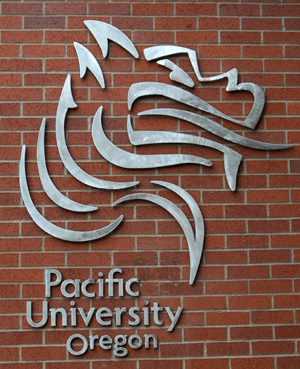What is Boxer?
The original inspiration for Pacific's Boxer mascot was a bronze Chinese incense burner in the form of a qilin. This incense burner was donated to Pacific University by members of the Walker Family around 1898. By the early 1900s, students were calling it by the nickname "Boxer" and treating it as a trophy that they hid and stole from each other for decades. The original Boxer statue disappeared in 1969 and was not seen in public again for 55 years, until it was returned in 2024. (See the "History" portion of this site for more detail on Boxer's story over time.)
On this page, learn more about these aspects of Boxer's identity:
Boxer the Qilin
In early modern China, the qilin was believed to be a wise and beautiful magical being that would appear in order to signal the birth or death of a great ruler or sage. Known as kirin in Japanese, this mythical animal symbolized good luck, prosperity and fertility.
Belief in the qilin goes back at least to the third century C.E., but ideas about its appearance changed over time:
According to anthropologist Schuyler Cammann, by the Ming dynasty (1368-1644), the Qilin had evolved from the single-horned creature to one that has the head of a dragon with a pair of horns. Although horned, the Qilin is a compassionate and benevolent creature that walks rhythmically without treading on insects or damaging the grass. Together with the phoenix, dragon, and tortoise, the Qilin is one of the Four Supernatural Creatures (Si ling) and symbolizes virtue and prosperity. Its appearance often coincides with the arrival of a sage or virtuous ruler. In folklore, the Qilin is believed to bring talented children to families. (Ashgate, 2014, p. 482)
The original incense burner that inspired Pacific's Boxer mascot had a dragon-like face and a single, multi-pronged horn. It also had the legs and antlers of a deer, the scales and whiskers of a carp, and a tail like that may be of a lion or an ox. As seen in the photograph above, Boxer originally had twisting locks of hair attached to his lower legs. This hair as well as his tail and whiskers flowed upwards, unaffected by gravity. This was an iconographic signal of the qilin's special nature; like Chinese dragons whose hair floats upwards rather than down, the qilin is supernatural. Flame-like lines on his back further reinforce his association with the spiritual.
Like a griffin or a pegasus in Western mythology, the qilin is a chimera, or a hybrid of several animals. For this reason, Euro-Americans sometimes call the qilin a "Chinese unicorn." In Pacific's past, students who were unfamiliar with the qilin though that it looked like a dog or a dragon. Thus in older publications issued by Pacific, Boxer was often referred to as one of these other creatures. These assumptions have been corrected in recent years as the university's students and staff have learned more about the significance of the qilin.
Boxer the Statue, or Incense Burner
The original Boxer statue was a bronze incense burner. Its date of creation is unknown, but it may have been cast in the 1700s or earlier.
In early photographs like the one shown at the top of this page, a hinge under his chin could still be seen. His head swiveled downwards on this hinge so that incense could be placed inside. When the incense burned, smoke would waft up out of the openings in his head. His tail was also hinged, perhaps in order to allow ash to be emptied. The body was hollow. Many of these details were later destroyed through repeated breakage and re-welding of the statue. Today the original Boxer is in a state that is "much loved," but also very damaged compared to its original appearance. A similar (but smaller and less finely-detailed) incense burner from Pacific's collections is pictured here for comparison.
For more detail on Boxer's appearance over time, see the page: Why does Boxer look Damaged?
Boxer, the Symbol of Pacific University
From 1899 through 2024, the original Boxer statue was in the hands of students and alumni. Originally called "The College Spirit," it became the grassroots symbol of the student body. Students put Boxer's image on the masthead of their newspaper, included his picture in the yearbook, named the annual student directory after him, created clubs named after him, and so on.
But, Boxer was not Pacific's official mascot. That honor went to the "Badger," who was designated as the university's mascot in 1921. It was not until 1968 that the students, trustees and faculty of Pacific officially replaced Badger with Boxer as the mascot. (See the 1960s-1970s history page for more detail on how Boxer became Pacific's official mascot.)
After that time, the usage of Boxer as a symbol of the university increased in Pacific's branding, sports, campus place names, and university activities. Students became named as "Boxers," and the adjective "Boxer" became a synonym for "Pacific" in daily life. A large Boxer statue made of iron was installed near the residence halls in 2006. In 2008, Pacific's marketing department incorporated an abstract image of Boxer's head into the university's logo.
Despite the great enthusiasm for Boxer on campus, the mascot's identity and meaning as a qilin was overlooked for many years. Since the 2010s, students and faculty have become increasingly interested in learning about the significance of qilins within Chinese (and Chinese-American) culture. Members of the university community wish to ensure that Boxer be understood and used in a culturally respectful manner. How Boxer is named, described and portrayed are a part of conversations on campus today.
References
The Ashgate Encyclopedia of Literary and Cinematic Monsters. Burlington: Ashgate, 2014. p. 482.
Sax, Boria. Imaginary Animals : The Monstrous, the Wondrous and the Human. London: Reaktion Books, Limited, 2013. p. 85-90.
Watt, James C. Y. "The Giraffe as the Mythical Qilin in Chinese Art: A Painting and a Rank Badge in the Metropolitan Museum." Metropolitan Museum Journal 43 (2008): 111-115.


